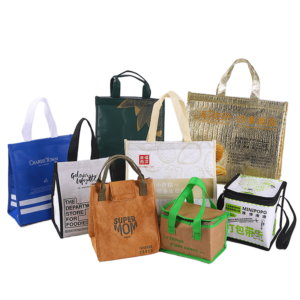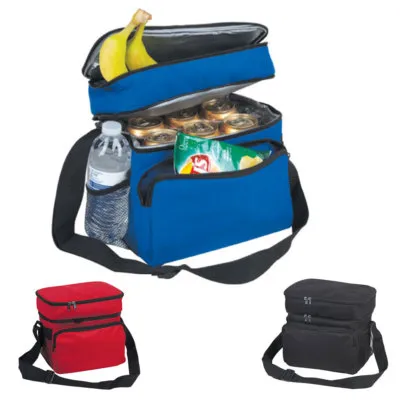Seasonal Demand Strategies for PP Woven Bags – Best Practices
These eight strategies help manufacturers and distributors manage seasonal demand. They balance inventory, production, labor, and branding. They are based on proven industry methods.

Effective planning and coordination ensure stable supply during peak seasons without excess cost.
Continue reading to learn practical steps in inventory, production, workforce, and logistics management.
1. Accurate Demand Forecasting[^1]

Accurate demand forecasting uses data to predict future orders. It helps prepare for peak seasons.
Why Forecasting Matters
Forecasting prevents last-minute scrambles. It reduces late orders, supplier delays, and production bottlenecks. It helps coordinate labor and supply early.
How to Forecast
- Historical Data: Use sales data from previous years.
- Predictive Analytics: Use software to analyze trends.
- Market Reports: Follow market cycles and events like holidays or harvests.
Forecasting Best Practices
| Method | Benefit | Risk to Manage |
|---|---|---|
| Data Analytics | Identifies demand peaks and patterns | Requires clean and accurate data |
| Trend Reports | Anticipates upcoming changes | May not reflect local conditions |
| Collaboration | Aligns stakeholders early | Needs consistent data sharing |
Think About:
Lead time from supplier to warehouse. Are there seasonal shipping delays? Adjust forecast with buffer time. If demand drops, avoid overstock. If demand rises early, react with quick order plans.
2. Flexible and Segmented Inventory Management[^2]

Managing inventory in segments helps balance demand spikes and costs.
ABC Segmentation
Classify SKUs by demand importance:
- A items: High-volume seasonal products
- B items: Moderate and less important
- C items: Low demand, low risk
Set different stock levels by category.
Safety Stocks vs Lean Inventory
For A items, keep extra safety stock. For C items, reduce stock. Shift inventory focus to products that sell fast.
Inventory Flexibility
Use systems that allow quick stock level changes. Set automated reorder alerts for different segments.
Think About:
What is your warehouse capacity? Can you handle higher stock for top SKUs? Use shelving and cross-docking to store more. Regularly review sales and inventory data. Adjust plans monthly or weekly.
3. Supplier Collaboration and Contract Flexibility[^3]

Working closely with suppliers supports flexible volume handling in peak seasons.
Early Forecast Sharing
Send forecasts to suppliers months in advance. They can plan raw materials and staffing.
Flexible Contracts
Ask for contracts with adjustable volumes. Negotiate staggered deliveries. Avoid penalties for order changes.
Supplier Diversification
Use multiple suppliers for critical materials. This reduces risk from delays or shortages.
Think About:
Do suppliers have capacity for peak orders? Do they offer volume discounts or seasonal pricing? Discuss standby agreements. Ensure quality stays consistent if volume shifts across suppliers.
4. Early Production Planning[^4]

Plan production with lead time in mind to meet demand on time.
Begin Early
Start production well before peak season. Include time for raw materials and machine changeover.
Production Scheduling
Use tools to schedule machines and labor. Optimize run lengths to minimize waste and downtime.
Buffer Time
Include buffer days in schedule. Account for supplier delays or machine breakdowns.
Think About:
Can you run extra shifts or weekend production if needed? Can you pre-produce less seasonal colors or designs? How quickly can you switch production lines for customized prints?
5. Custom Packaging and Seasonal Branding[^5]

Seasonal packaging boosts appeal and traffic. It adds value.
Seasonal Themes
Use holiday, harvest, or event themes. Limited editions can increase urgency and differentiate from competitors.
Benefits of Custom Packaging
- Boosts customer perception
- Justifies price premium
- Enhances brand visibility
Execution Tips
Coordinate design and production early. Use digital mock-ups to test with customers. Ensure consistent quality and print color.
Think About:
Do customers notice seasonal bags? Do they increase sales? Collect feedback. Plan limited runs with higher margins. Balance value and cost.
6. Technology Integration for Real‑Time Inventory and Demand Management[^6]

Using technology ensures better control and visibility of inventory and demand.
ERP and WMS Systems
Implement software for real‑time stock tracking and warehouse operations. Automate reorder points based on actual usage.
Demand‑Driven Planning
Use systems that update forecasts with real‑time sales data. Adjust orders dynamically.
Reporting Dashboards
Build dashboards to monitor demand trends, inventory levels, and delays. Set alerts for unusual patterns.
Think About:
Do you have ERP or WMS in place? Can it integrate with sales and supplier systems? Automate reorder triggers. Provide training so staff trust and use the data.
7. Workforce Management[^7]

Proper workforce planning ensures capacity during busy times without extra cost year-round.
Seasonal Hiring
Hire temporary staff during peak seasons. This increases capacity without permanent labor cost.
Cross‑Training Staff
Train workers to perform multiple roles. This adds flexibility during peaks.
Incentive Programs
Offer bonuses for meeting deadlines, low errors, or weekend shifts. Motivate staff during high-pressure periods.
Think About:
Do temp workers need special skills or training? Can they be trained quickly? Can permanent staff supervise temps? Are costs lower than delays? Plan onboarding before peak season.
8. Optimized Storage and Logistics Planning[^8]

Managing spikes needs smart warehousing and delivery planning.
Temporary Warehousing
Rent space or use 3PL providers to handle extra stock. Use cross‑docking to move goods fast without long storage.
Delivery Scheduling
Plan shipments to match demand timing. Avoid delivery bottlenecks at loading docks.
Scalable Logistics
Use trucks that can be scaled by volume. Avoid paying for unused space or facing capacity shortages.
Think About:
What's your current warehouse capacity? Can you expand? Do you have access to short-term logistics partners? Map distribution routes to avoid peak congestion. Use software to optimize load planning.
Conclusion
Managing seasonal demand for PP woven bags requires careful planning in forecasting, inventory, supplier relations, production, branding, technology, workforce, and logistics. Each strategy supports stability and reduces risk during demand surges.
As a producer, I found that cross-trained staff and real‑time dashboards give the most gains. They avoid stockout and minimize rush orders.
Let me know which strategy fits your operation best. Share your views below.
---
[^1]: Explore this resource to understand how accurate forecasting can prevent costly delays and improve inventory management.
[^2]: Learn how segmenting inventory can help balance demand and reduce costs effectively.
[^3]: Discover how collaborating with suppliers can enhance your production capabilities during peak seasons.
[^4]: Find out how early planning can ensure timely production and meet seasonal demand without delays.
[^5]: Understand the importance of seasonal branding in attracting customers and boosting sales.
[^6]: Explore how technology can enhance visibility and control over inventory and demand.
[^7]: Learn how proper workforce planning can optimize labor costs and improve efficiency.
[^8]: Discover strategies for managing logistics and storage to handle seasonal demand spikes.








